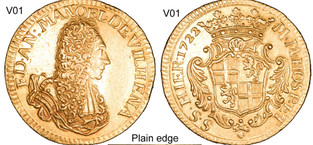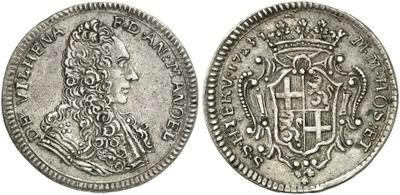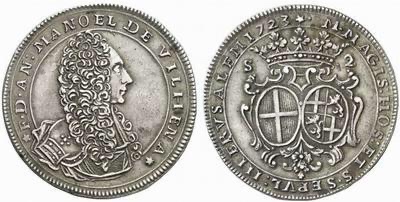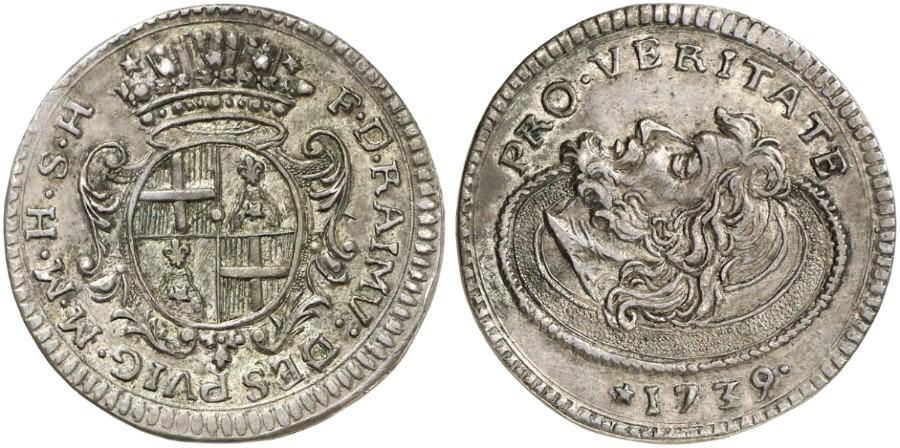What is a coin worth?
- Malta Numismatic Society

- Apr 16, 2020
- 3 min read

We often get asked this question, however there is rarely a correct answer, and even past auction results are often not a good benchmark. Even global economic phenomena such as the pending recession might mean that although lack of liquidity should have a negative effect, people often dump shares and commodities and put their money in gold and coins. Diamonds are valued according to the 4 ‘C’s. The value of a coin, in my opinion is dependent on it’s ‘desirability’. So what makes a coin desirable? These, I believe are the 5 main factors; Rarity Condition Artistry. Provenance And to a certain extent, Material.


Since my ‘obsession’ lies mainly with coins of the Knights of Malta, I will use these to elaborate.
Rarity; This can relate to different factors, such as the rarity of a particular denomination such as 8 or 16Tari, or 10 or 12 Zecchini.
A particular Grand Master can be rare, especially if he might have issued very few or even single denominations. Del Ponte, Clermont Ghessan and Vasconcellos come to mind.
A particular year of an otherwise common coin can be rare and prized. Say,a 1558Tari, a 1722 4Tari, a 1758 30Tari or a 1773 2Scudi.



Condition; The condition of a coin can make a relatively common coin, desirable. Copper coins better than very fine, are hard to come by so anything better than that grade can command premium prices. Ximenez obverses are notoriously defaced, so a good portrait is sought after.


Artistry; Beauty is found in the artistic image and design of the coin as well as sharp, clear features of the strike. A round flan and good edges where applied are preferred. Coins in the reign of Homedes, were of high standards, the quality of which seems to have been lost until the masterpieces of Zondadari, Perellos and most of all under Vilhena. Vilhena’s coins reached the Zenith of minting in Malta, for beauty, quality, variety and good silver and gold content. On the other hand, the early Pinto portrait coins, bordered on the farcical. These coins are also very rare leading me to believe that they were recalled.

Provenance; The fact that a particular coin has a known pedigree, especially if it has been part of a famous collection such as Restelli or Calleja Schembri, or been in a notable auction such as LHS99 or Künker 246, adds certain prestige and value.

Also, knowing where a coin has come from, and it’s individual history contributes to one’s peace of mind knowing that your purchase is legitimate, and the source is traceable. Material; To a lesser and subjective extent, whether the coin is made of gold, silver or copper will affect the value. It is safe to say that gold coins, achieve prices in excess of the bullion value difference. A case in point is the two portrait L’Isle Adam coins at LHS99 in 2006. Whereas they were of comparable quality and rarity, the Zecchino sold for €140,000 while the silver Tari (my preferred coin) made €12,000.

However it is also safe to say that copper and silver coins have appreciated at a much faster rate than gold ones.
So if your coins fit any one of the criteria discussed, possibly more, then the chances are that you are sitting on a valuable piece.
Should you wish any information or possible provenance or history of any of your coins ,
feel free to contact the Malta Numismatic Society and if you enjoy this hobby, please enroll in our ranks.
Colin Formosa
Secretary General
Malta Numismatic Society




















And just to prove a point, a coin which normally sells around$300, has already been bid up to $1200 due to its fantastic condition.
Great post Colin, I fully agree that all those factors, have a bearing on a coin’s value. In the case of the coins of the Knights of Malta. I think the rarity is the prime factor, particularly those of the early Grand Masters. I have listed the number of coins seen in Museums and in private collections desperately in my book, and I am continually adding new coins found to my database.